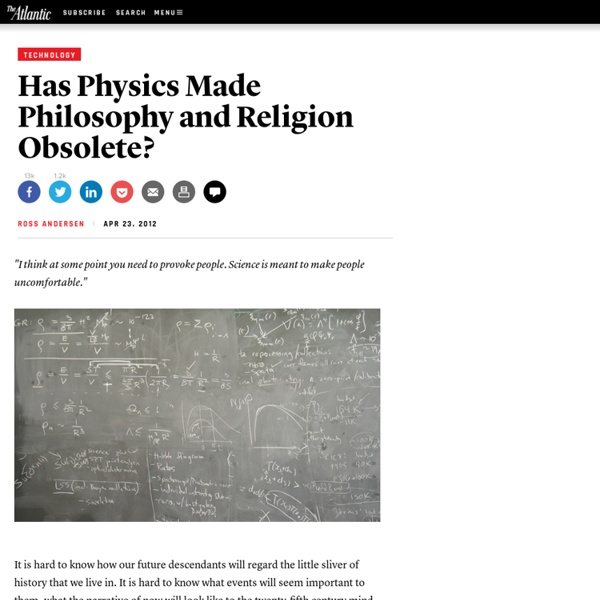Has Physics Made Philosophy and Religion Obsolete? - Technology

Philosophy v science: which can answer the big questions of life? | Science | The Observer
Julian Baggini No one who has understood even a fraction of what science has told us about the universe can fail to be in awe of both the cosmos and of science. When physics is compared with the humanities and social sciences, it is easy for the scientists to feel smug and the rest of us to feel somewhat envious. Philosophers in particular can suffer from lab-coat envy. However – and I'm sure you could see a "but" coming – I do wonder whether science hasn't suffered from a little mission creep of late. I don't feel proprietorial about the problems of philosophy. Some of the things you have said and written suggest that you share some of science's imperialist ambitions. Lawrence Krauss Thanks for the kind words about science and your generous attitude. Getting to your question of morality, for example, science provides the basis for moral decisions, which are sensible only if they are based on reason, which is itself based on empirical evidence. Take homosexuality, for example.
A Universe from Nothing: Why There Is Something Rather than Nothing (9781451624458): Lawrence M. Krauss, Richard Dawkins
Related:
Related:



